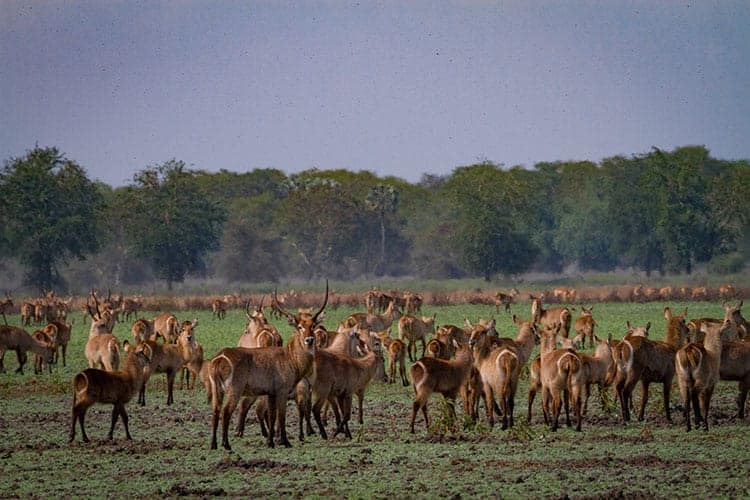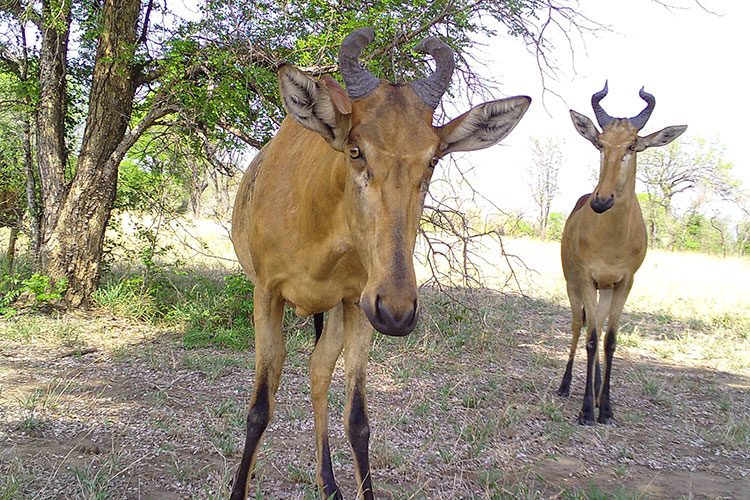Mozambique’s civil war, which raged from 1977 to 1992, took a devastating toll on wildlife in the country’s famed Gorongosa National Park, a 1,500-square-mile reserve at the southern tip of Africa’s Great Rift Valley. During the war, violence and food insecurity drove many people to hunt wild animals to feed themselves, resulting in the loss of more than 90% of the large mammals in the park.
Nearly three decades later, animal populations have largely recovered, thanks to ongoing conservation and reintroduction efforts in the region. But, according to a new study published online this week in the journal Animal Conservation, the new animal community looks a little different than it did before the war.
“There are few places in the world that have had such a dramatic reset, where animals have been pretty much wiped out and then have come back,” said Kaitlyn Gaynor, lead author of the study, who conducted the research as a doctoral student at UC Berkeley. “It looks a lot like it did before the war, if you look at just the number of total animals, or the number of species present throughout the landscape. But when you take a closer look at the distribution of species, it’s a bit out of whack.”
With the help of an array of 60 camera traps, Gaynor and a team of researchers documented the current wildlife populations in the park. They found that many carnivores and ungulates once populous before the war — including iconic African animals like wildebeests, zebras and hippopotamuses — are now scarce. In their place, the landscape is now dominated by other animals, like baboons, warthogs, bushbucks and especially waterbucks.
They also found that smaller predators, including house cat-sized animals such as civets, mongooses and genets, are thriving. This may be because the loss of many apex predators removed competition for prey and prevented these smaller predators from being eaten by larger carnivores.
“Gorongosa is a heartening example of ecological rehabilitation, but this work and others shows restoring nature is a slow and meandering process — even when the old actors are put back in place, they often take on new roles,” said Justin Brashares, a professor of environmental science, policy and management at UC Berkeley and senior author of the study.
At this point, it is unclear if the distribution of species in the park will one day return to its pre-war condition, or if it will one day reach a different steady state. Since the study was concluded, wild dogs and leopards have been reintroduced into the park in an effort to balance the predator populations.
“Our study represents the first data point in what will hopefully be a long-term, ongoing camera trap monitoring effort,” said Gaynor, currently a postdoctoral researcher at the National Center for Ecological Analysis and Synthesis (NCEAS) at UC Santa Barbara. “Gorongosa has been a really remarkable conservation success story, but I think it’s also pretty interesting how the system has recovered asymmetrically. There remain questions about the causes and consequences of that asymmetry and how the wildlife community is going to change in the future, given ongoing transformations to the landscape.”



